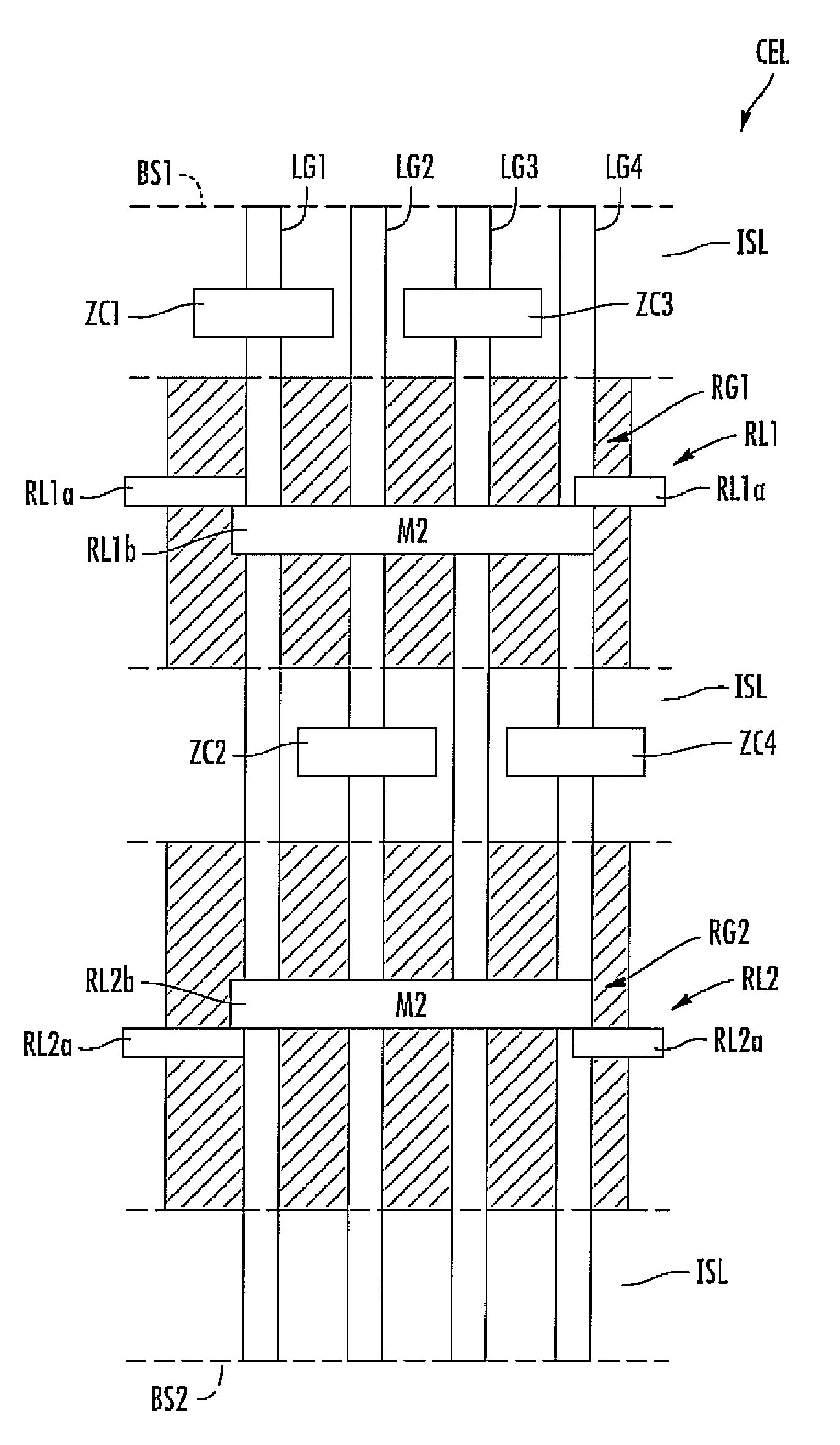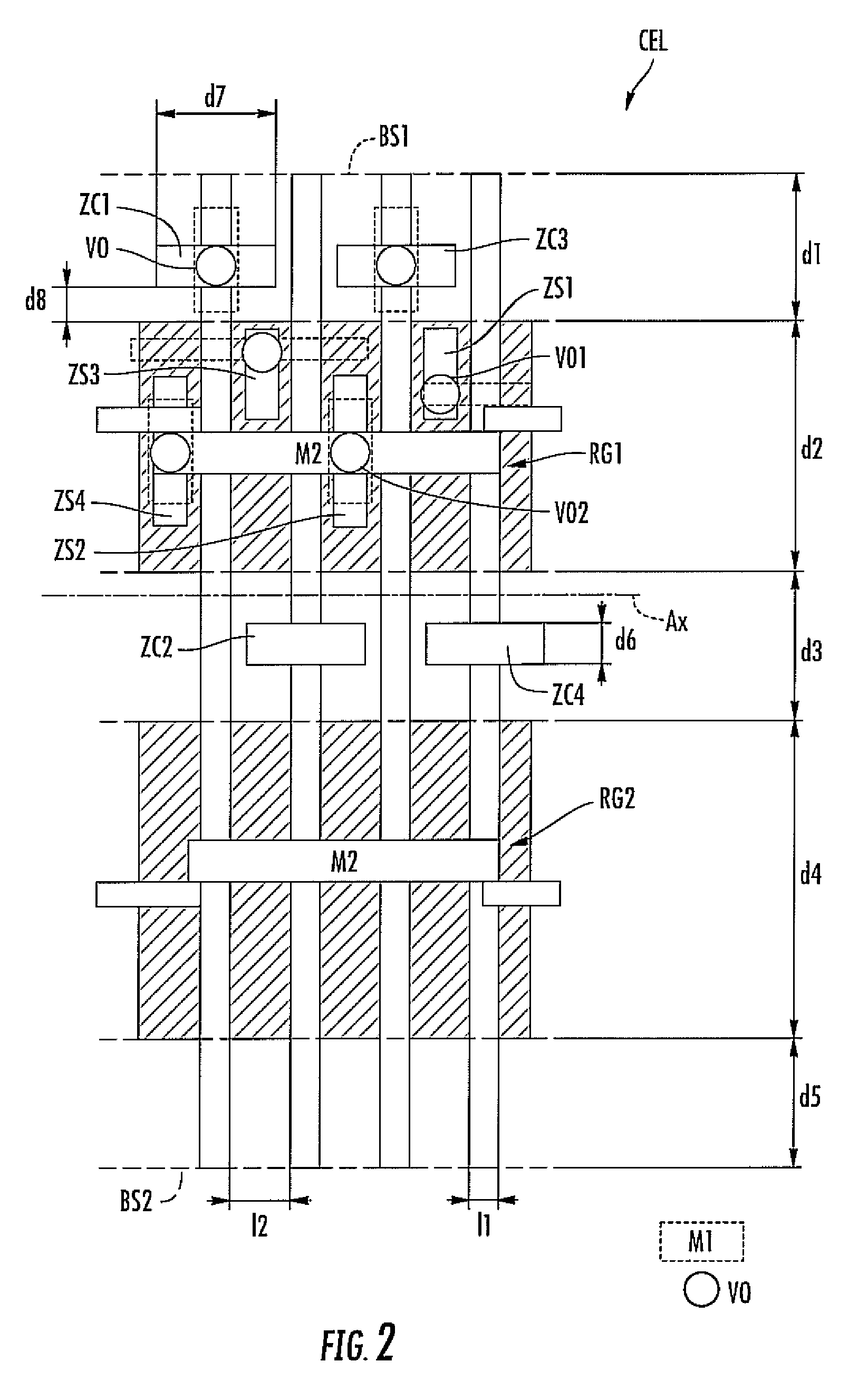Standard cell for integrated circuit
a technology of integrated circuits and standard cells, which is applied in the direction of semiconductor devices, semiconductor/solid-state device details, electrical apparatus, etc., can solve the problems of increasing contact volume, and reducing the performance of transistors
- Summary
- Abstract
- Description
- Claims
- Application Information
AI Technical Summary
Benefits of technology
Problems solved by technology
Method used
Image
Examples
Embodiment Construction
[0021]Although the invention applies to any standard cell produced in sub-28-nanometer technology, and especially sub-20-nanometer or 20-nanometer technology, FIGS. 1 and 2 schematically illustrate an exemplary topology for a standard cell produced in 20-nanometer CMOS technology.
[0022]The standard cell CEL is illustratively an input / output cell comprising pMOS transistors and nMOS transistors. In the illustrated example, the source and drain active zones of the pMOS transistors are located in the first region RG1, whereas the source and drain active zones of the nMOS transistors are located in the second region RG2. The regions RG1 are surrounded by isolating regions ISL, for example, shallow trench isolation (STI) regions.
[0023]The references LG1, LG2, LG3, and LG4 denote lines, for example, made of polycrystalline silicon, forming the transistors of the cell CEL gate lines. These gate lines are parallel. The cell CEL comprises, by way of non-limiting example, four gate lines. The...
PUM
 Login to View More
Login to View More Abstract
Description
Claims
Application Information
 Login to View More
Login to View More - R&D
- Intellectual Property
- Life Sciences
- Materials
- Tech Scout
- Unparalleled Data Quality
- Higher Quality Content
- 60% Fewer Hallucinations
Browse by: Latest US Patents, China's latest patents, Technical Efficacy Thesaurus, Application Domain, Technology Topic, Popular Technical Reports.
© 2025 PatSnap. All rights reserved.Legal|Privacy policy|Modern Slavery Act Transparency Statement|Sitemap|About US| Contact US: help@patsnap.com



